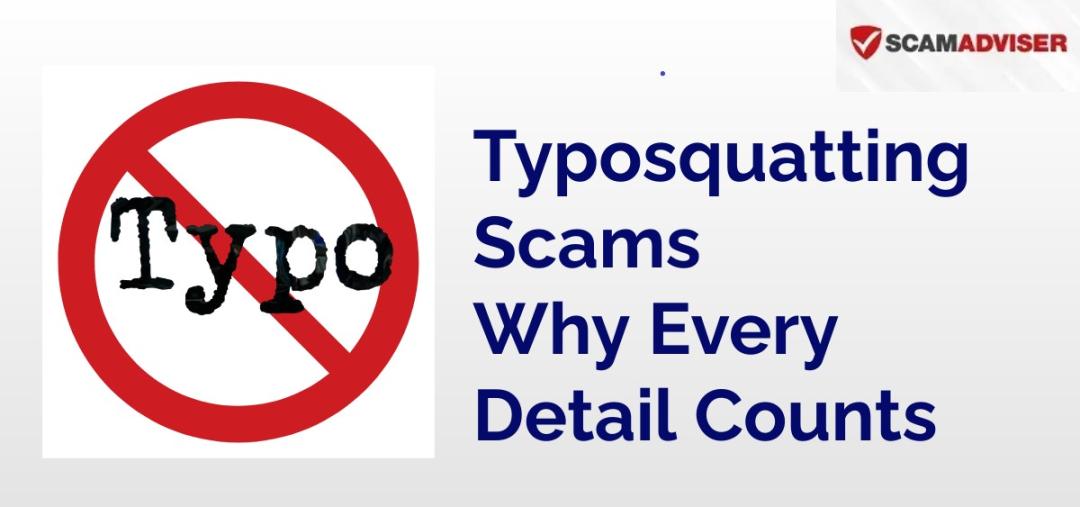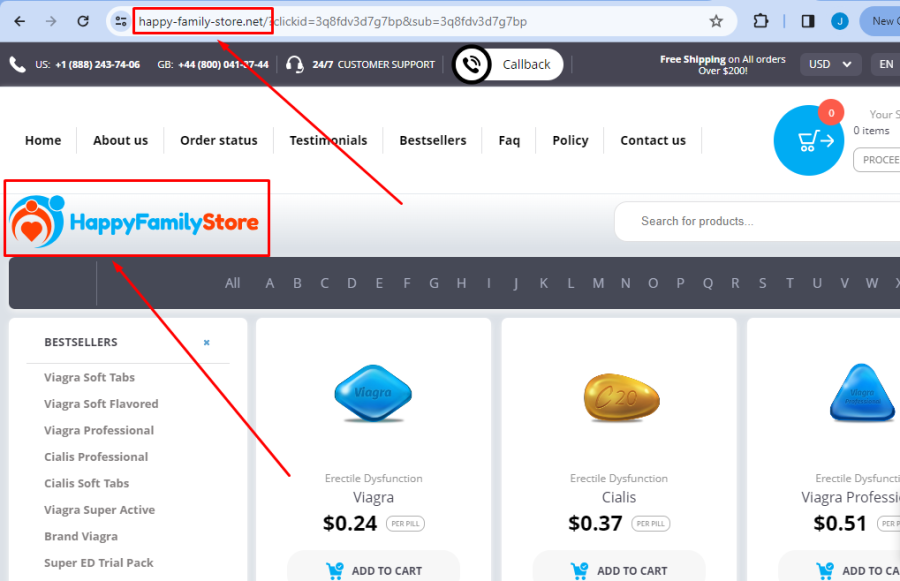Typosquatting Scams: Why Every Detail Matters

Author: Adam Collins
Imagine you're in a hurry to check your bank account, so you type in the URL quickly, but alas, your fingers betray you, and you end up on a site that looks eerily similar to your bank's website. Well, this is what scammers are hoping for with typosquatting. Typosquatting is a scam where scammers mess with URLs to dupe customers into visiting dubious websites. This type of social engineering scam has been recently gaining traction. Typosquatting can easily lead to unsuspecting customers giving sensitive details to bad actors and for the companies involved, they can suffer brand reputational damages.
So, what is typosquatting and why should you be worried? Read on as we discuss why typosquatting where a simple slip of the keyboard can lead to huge losses.
What is Typosquatting
As the name suggests, “typo” is when people make typing mistakes. Scammers often register domains with typos on their URLs to mislead users. In the end, users may visit the websites thinking they are visiting the actual site but in actual sense, they visit a scam website.
Usually, typosquatting happens in two ways;
- Users can accidentally mistype the name of a website. E.g. Gmai.com instead of Gmail.com.
- Scammers can lure them in through phishing attacks.
It does not stop at the misspelled URLs in typosquatting scams as the fraudsters will go to great lengths impersonating the real website. If you are not too careful, you won’t tell the difference between the two websites.
For example, the two websites below share the same name, layout, and design but have two distinct URLs.

Example 1

Example 2
Types of Typosquatting
There are various ways in which scammers exploit typosquatting. Here are some of them;
Bait and Switch: Promises vs. Reality
Picture this: you're hunting for something special online and stumble upon a website that looks totally legit. Excitedly, you make your purchase. But when the package arrives, it's not what you expected. Maybe you ordered a pretty dress, but you got a plain tie instead. That's the bait-and-switch tactic at play – it promises one thing but delivers another.
What makes it worse is that sorting out the mess can be a nightmare. Trying to get your money back on your credit card feels like trying to untangle a knot, and returning items? Forget about it – you'll likely end up paying for the return shipping. It's a sneaky trick that leaves you feeling let down and out of pocket.
Impersonators: The Wolf in Sheep's Clothing
Scammers are sneaky. They work hard to make their fake websites look just like the real ones. They copy everything – the logo, the pages' setup, and even the colors. It's like they're trying to be a perfect copycat. And because they look so much like the real thing, it's easy to fall for their tricks. It's a game of deception that can leave you feeling fooled and frustrated.
Surveys and Giveaways: From Fun to Fraud
You think you're taking a harmless survey or entering a fun giveaway, but in reality, you're handing over your personal information on a silver platter. Through identity theft, they can wreak havoc on your finances, open lines of credit in your name, or even impersonate you online. It's like inviting a stranger into your home for tea and finding out they've raided your fridge, stolen your identity, and are now parading around town pretending to be you. It's not just a breach of trust; it's a serious invasion of your privacy and security, leaving you wide open to all sorts of shady business.
Related Search Results Listing: Redirect Roulette
You make a simple typo, but instead of reaching your destination, you're sent to a competitor's website. These crafty folks make money every time someone clicks on their site, essentially profiting from others' mistakes. It's like trying to find your favorite store and ending up at a knockoff down the street, but the imposter store gets paid each time you accidentally visit. It's not just annoying for you; it's also unfair to the real business, as these squatters piggyback on their good name for profit.
For instance, David Cenciotti registered “Goggle.com” which used to run ads and he profited from that venture. Google took legal action which resulted in Google ultimately winning the case, and the domain was ultimately transferred to Google.
How to Recognize Typosquatting Scams
Typosquatting scams can be tricky to spot, but with a keen eye and some awareness, you can protect yourself from falling victim to these sneaky schemes. Here are some tips to help you recognize typosquatting scams:
Pay Attention to URL Details
Take a moment to double-check the URL whenever you're about to enter sensitive information or conduct online transactions. Sometimes, the devil is in the details and a second look can save you from trouble.
Beware of Redirects
If you find yourself unexpectedly redirected to a website that looks suspiciously similar to the one you intended to visit, proceed with caution. Typosquatting scammers often use redirection techniques to lure unsuspecting users to their scam websites. For instance, we recently came across this website Infocialisguides.com, which redirects to Happyfamilystore-rx.com.
Exercise Caution with Pop-ups and Ad
Keep an eye out for those pesky pop-ups and sketchy ads. If they're asking for personal info or offering deals that sound too good to be true, they probably are. It could be a typosquatting setup trying to steal your data.
Scrutinize Website Content
Dive deeper into the content of the website you're visiting. Pay attention to the layout, branding, and overall functionality. While typosquatting sites may try to mimic legitimate ones, closer inspection might reveal inconsistencies or poor quality that give away their true nature.
Bottom Line: It Pays to Pay Attention
In a world where a simple typo can become an invitation to online scams, it's crucial to remain attentive Typosquatting isn't just a minor inconvenience; it's a sneaky game scammers play to trick unsuspecting users. The different tactics, from bait-and-switch to impersonation, emphasize the need for careful scrutiny in our online interactions.
So, how do you protect yourself from these sneaky scams? Keep an eye on the details in the web address, be cautious of unexpected redirects, and watch out for shady pop-ups and ads asking for too much personal info. Take a good look at the website you're on – if something feels off, it probably is.
Mistakes happen, but some are costlier like clicking on the wrong URL. Remember to slow down, double-check, and take into account the importance of every detail when you're online. Stay sharp, and stay safe!
Report a Scam!

Have you fallen for a hoax, bought a fake product? Report the site and warn others!
Scam Categories
Help & Info
Popular Stories
As the influence of the internet rises, so does the prevalence of online scams. There are fraudsters making all kinds of claims to trap victims online - from fake investment opportunities to online stores - and the internet allows them to operate from any part of the world with anonymity. The ability to spot online scams is an important skill to have as the virtual world is increasingly becoming a part of every facet of our lives. The below tips will help you identify the signs which can indicate that a website could be a scam. Common Sense: Too Good To Be True When looking for goods online, a great deal can be very enticing. A Gucci bag or a new iPhone for half the price? Who wouldn’t want to grab such a deal? Scammers know this too and try to take advantage of the fact. If an online deal looks too good to be true, think twice and double-check things. The easiest way to do this is to simply check out the same product at competing websites (that you trust). If the difference in prices is huge, it might be better to double-check the rest of the website. Check Out the Social Media Links Social media is a core part of ecommerce businesses these days and consumers often expect online shops to have a social media presence. Scammers know this and often insert logos of social media sites on their websites. Scratching beneath the surface often reveals this fu
So the worst has come to pass - you realise you parted with your money too fast, and the site you used was a scam - what now? Well first of all, don’t despair!! If you think you have been scammed, the first port of call when having an issue is to simply ask for a refund. This is the first and easiest step to determine whether you are dealing with a genuine company or scammers. Sadly, getting your money back from a scammer is not as simple as just asking. If you are indeed dealing with scammers, the procedure (and chance) of getting your money back varies depending on the payment method you used. PayPal Debit card/Credit card Bank transfer Wire transfer Google Pay Bitcoin PayPal If you used PayPal, you have a strong chance of getting your money back if you were scammed. On their website, you can file a dispute within 180 calendar days of your purchase. Conditions to file a dispute: The simplest situation is that you ordered from an online store and it has not arrived. In this case this is what PayPal states: "If your order never shows up and the seller can't provide proof of shipment or delivery, you'll get a full refund. It's that simple." The scammer has sent you a completely different item. For example, you ordered a PlayStation 4, but instead received only a Playstation controller. The condition of the item was misrepresented on the product page. This could be the